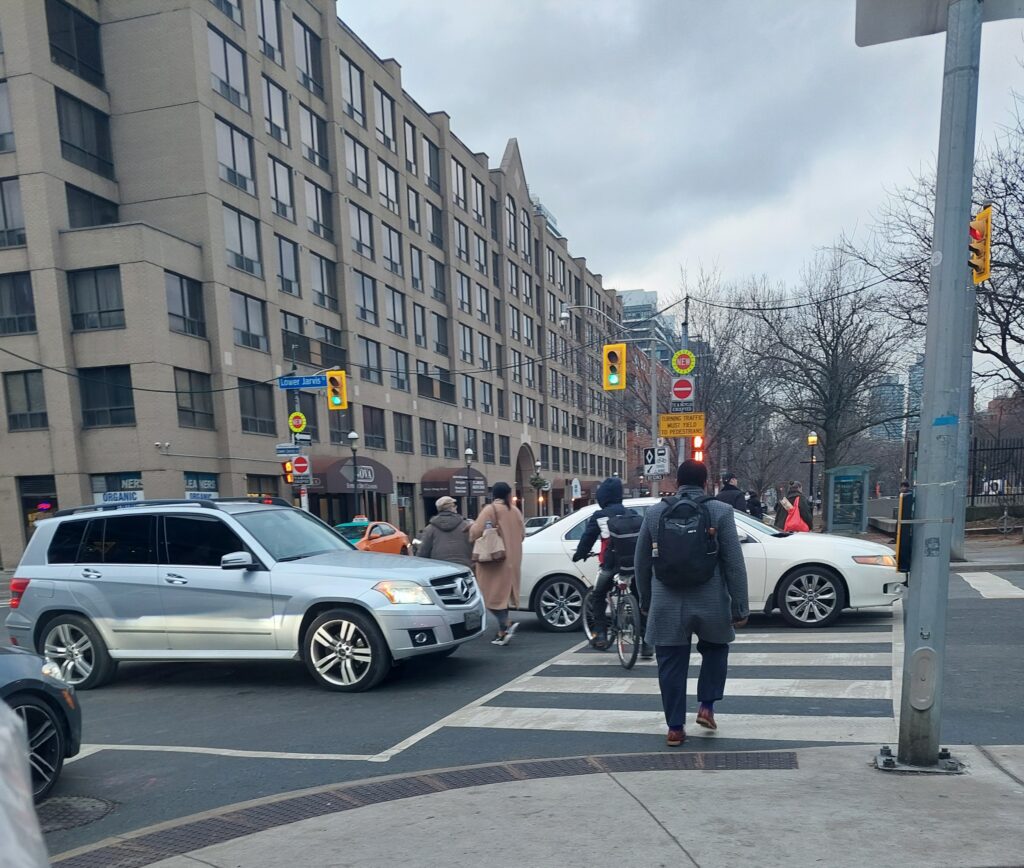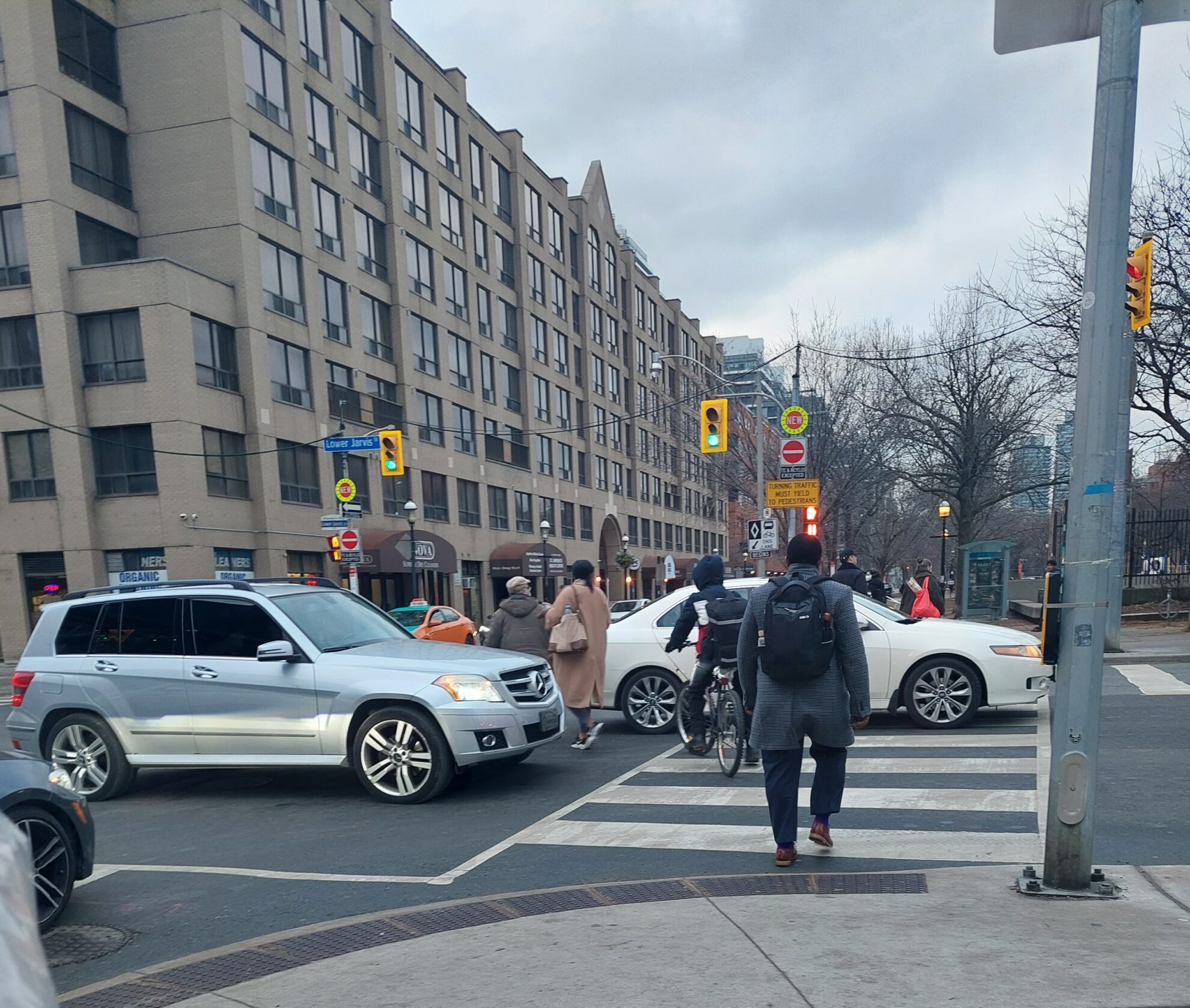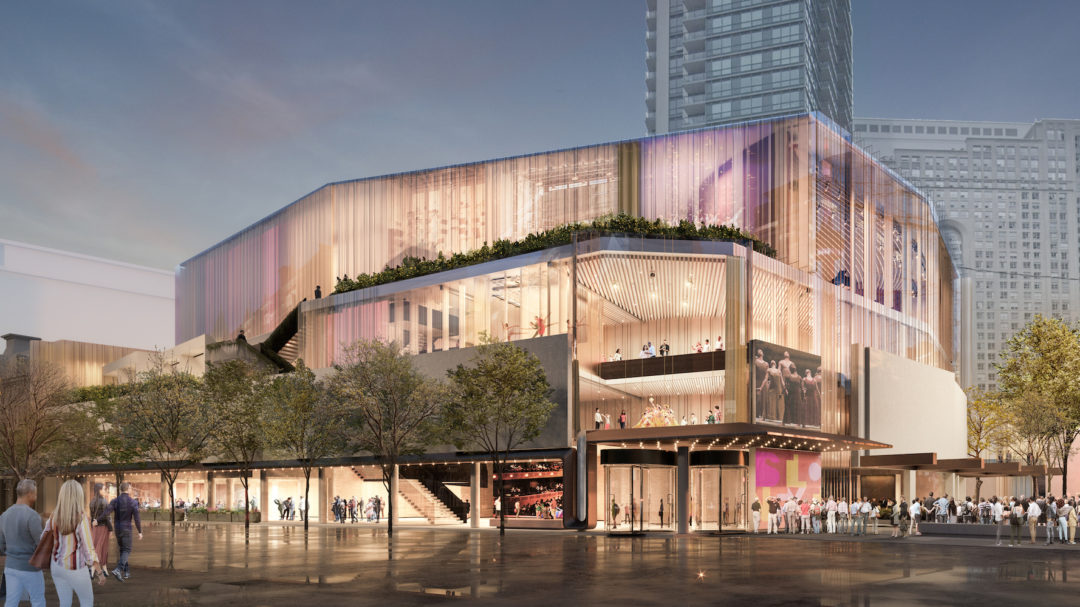Andre Bermon, Publisher –
“Don’t Block the Box” is the latest City Hall slogan to emerge as Council searches for solutions to Toronto’s infamous bumper-to-bumper traffic.
The city’s Congestion Management Plan 2023-2026, approved last October, was updated in Council’s March session to consider increasing fines for drivers blocking intersections between traffic lights. A staff recommendation to impose a $450 fine – up from $90 – was passed without debate.
According to Transportation Services, “Blockage of the Intersection” not only creates a safety risk for vulnerable road users but also has a negative impact on transit and other vehicles.
But before the fine can be applied under the Provincial Offences Act, it has to be reviewed by the Ministry of the Attorney General and approved by the regional senior judge of the Ontario Court of Justice.
If and when the increased fine is approved, enforcement is a whole other matter, frustrating residents living near high traffic zones.
“How are they going to implement this?” Frances Mahoney, a 25-year Esplanade resident, commented to the bridge.
Fed up with daytime gridlock on Jarvis Street, Mahoney wrote Ward 10 Councillor Ausma Malik in early February making the case for more traffic agents in the area. Since then, she has seen more consistent support from the city, but worries that relying on traffic agents alone won’t work in the long term.
The city expanded its traffic agent program last spring to increase road safety and keep traffic moving. Two areas initially targeted in the Downtown East were the Jarvis Street intersections with Lakeshore Boulevard and Adelaide Street East. More recently, agents have also been seen directing traffic at both Front Street East and The Esplanade crossings of Jarvis.
The city says traffic agents provide support along the Jarvis corridor from 1:30 to 7:30 p.m. on regular weekdays.
However, traffic agents can’t hand out fines if they witness infractions. The city’s Legal Services has confirmed that only the police have the legal authority to pull drivers over and issue tickets.
Transportation Services says it will engage with Toronto police to develop a strategy to enforce bylaw infractions, and report to Council in the fall.
In the meantime, three years of intermittent lane closures on the western portion of the Gardiner Expressway start in mid-April, and watermain replacement on The Esplanade will last until December. Traffic in the Downtown East is likely to get worse.
Mahoney characterized crossing the street at Jarvis and The Esplanade as “hazardous, extremely dangerous. [It’s] irresponsible of drivers because there’s a lot of elderly people out with their wheelchairs and walkers. And during rush hour, children are coming home from school.”

Car traffic “blocking the box” on Lower Jarvis Street and The Esplanade. Photo: Frances Mahoney
The city is also looking to pilot new technologies in traffic management, including artificial intelligence (AI). Currently, the city uses different “Automated Enforcement” tools such as cameras that fine drivers entering an intersection on red lights.
Transportation Services has recently linked up with the Ontario Centre for Innovation to jointly fund Ontario-based companies seeking to pilot services that mitigate congestion and improve road safety. Local telecommunications companies have also been solicited to leverage their 5G networks for the improved data flow that AI technology needs.
A recent study by geolocation firm TomTom showed the average Toronto driver loses about 255 hours every year to commutes.




